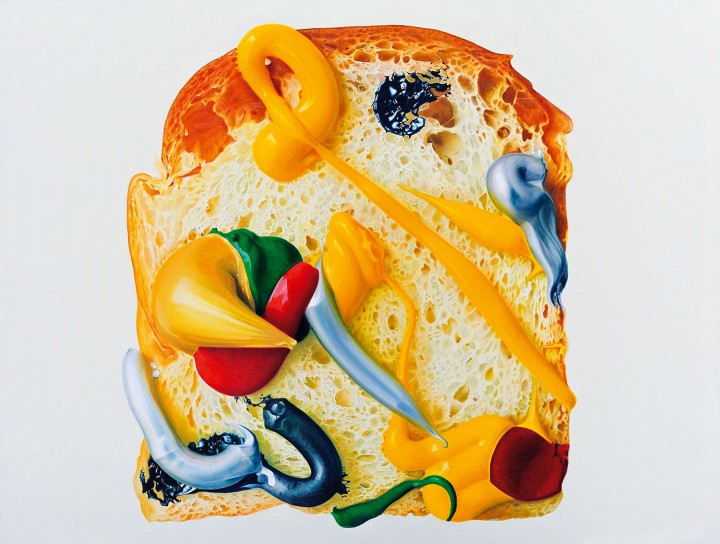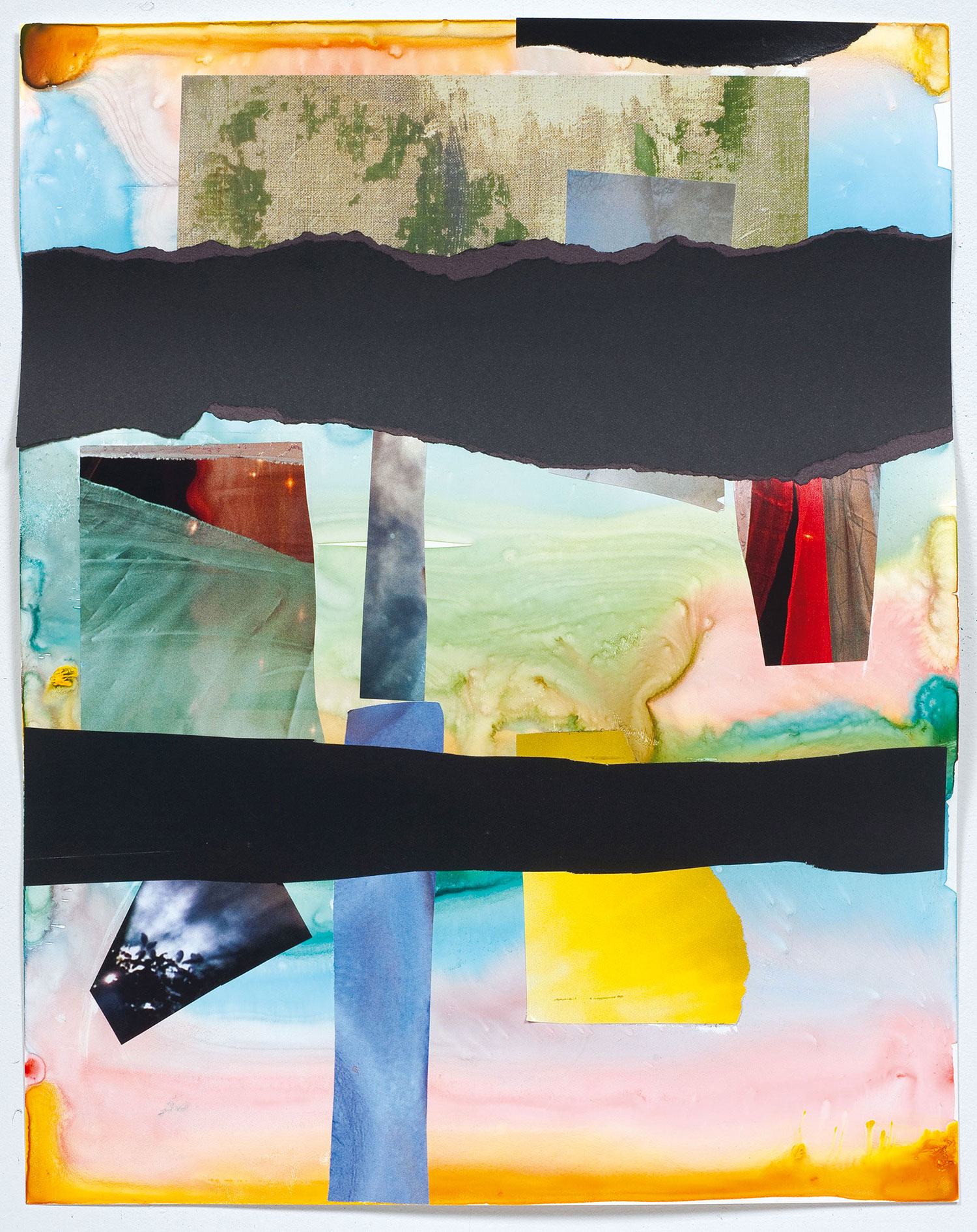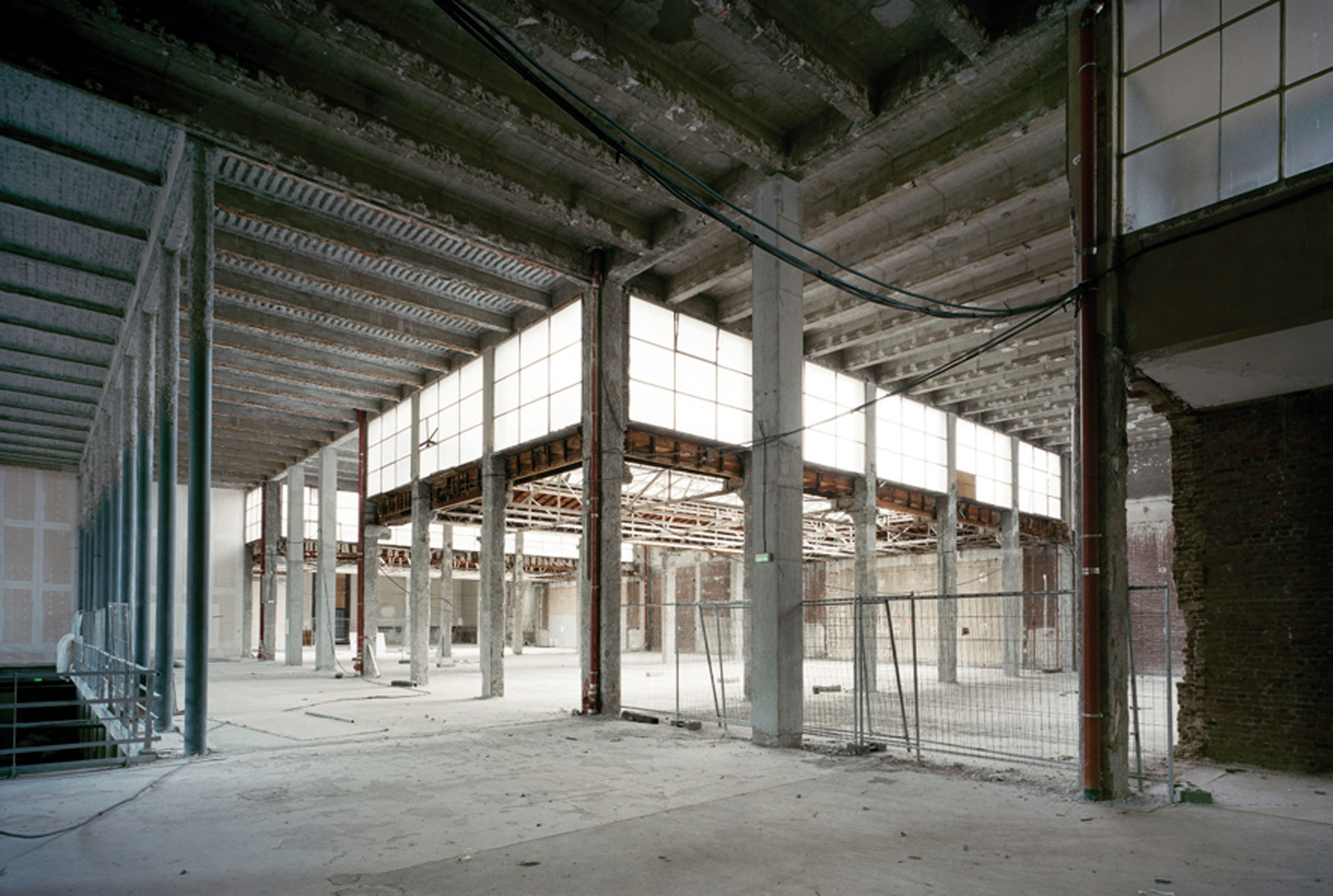
Lucy Rees: Your work consistently touches on the philosophical and epistemological aspects of painting. Can you talk about the title of your recent exhibition at Primo Marella in Milan, “Painting for Painting’s Sake,” and what is significant about being a painter today?
Gede Mahendra Yasa: I think painting as a medium and being a painter is not significant anymore. That’s why I chose this title. It’s a tautology; it is explained by referencing itself. I think of it as a painting universe. It reminds me of the universes of Marvel or DC Comics: a parallel universe with its own logic, fandom, villains, vigilantes and superheroes. When I make my paintings I feel like I live in a sanctuary, shelter or castle. It’s a nostalgic, lonely, but safe place.
LR: Your works in the past used multiple sources and influences. What is the reason for your now very direct appropriations of works by artists such as Piet Mondrian, Jackson Pollock and Vincent van Gogh?
GMY: If art is a language, painting is a dialect. The artist’s personal style is like the grammar or syntax of a piece of poetry or a short story. There are many stories in art history that I can play with, but I try to play seriously. My references are now more direct because I want the message to be understood clearly.
LR: Aside from being major figures in Western art history, these references have little in common. How do you choose your imagery? How much of your practice is about this selection process?
GMY: I see it differently. For me they are in fact similar because they are all from same field: painting. I can’t help thinking that even traditional Balinese painters are similar. In today’s context, with new media being created seemingly daily, I think we should simplify things by regrouping. Painting is one group. For me it’s very logical to jump wherever I want inside this group.
LR: Your re-workings of famous paintings seem to disrupt or alter what the movements stood for. Piet Mondrian and Theo van Doesburg’s De Stijl was about spiritual harmony and truth from pure abstraction and reduction. Your drips and painterly marks in Mondrian 1-5 (2011) clearly subvert this. Is it a critique or are you paying homage?
GMY: Homage. Homage for the holy cross — vertically and horizontally — that Mondrian still pays homage to, although he converted it from Protestant to Theosophy. I pay homage to the cross via Mondrian.

LR: Interestingly, Gerhard Richter is the only contemporary painter you reference in that exhibition. Jason Gaiger writes, “Richter’s work is a photographic illustration of a painting based on a photograph”; your work Fuck Richter (Pleasant Blur) (2011) is a realist illustration of a brushstroke painting. What are you trying to say with this inversion? How does your art relate to Richter?
GMY: I am referring to his famous “blurred” paintings. For me, the way he blurred his images became mannerist and repetitive. He seems to have used this trick for the last 30 years. I try to ridicule his technique by blowing up a small study in order to reveal the mystery and movement that he aimed for. It is simply a matter of material and technique: the tactility of gesturally applied pigment. I also reference another of his techniques; in the ’60s Richter made pseudo-abstract paintings by blowing up his thick gestural brushstrokes to create a realistic illusion. Later, in the ’90s, Glenn Brown did a similar thing by copying the famous paintings of Willem de Kooning and Frank Auerbach. By using these processes in my painting I want to make this blurred technique look static and frozen.
LR: When did you start looking at art in the West?
GMY: From the beginning.
LR: How do you think Western art history is received in Indonesia?
GMY: I think most Indonesians’ vision of Western art history is not considered as a whole but seen in a nonlinear, fragmented way. I think the point is missed that modern art developed step by step, that earlier movements influenced the later ones. I don’t know if it’s vital to know Western art history deeply, but there should at least be a better understanding.
LR: What was your training at the Indonesian Institute of the Arts Denpasar in Bali like?
GMY: Very bad. I mainly taught myself, like an autodidact. And it was not just learning art history but teaching myself painting techniques — almost everything. Schools that don’t teach anything — should we still call them schools?
LR: The recently intensified focus on Indonesian contemporary art has been triggered by trends in the global art market. Your works have fetched some very high prices at auction. Have you felt these powerful market shifts? Do you in turn make your works with an international audience in mind?
GMY: For my last exhibition, absolutely yes. There is no pressure though; it’s more like a challenge for me. Maybe I failed but at least I tried. Yes, I can feel the shift. When my fellow artists and I were young we read Agatha Christie’s novels. Now we read the Christie’s catalogue!

LR: Scholars and Asian art historians stress that contemporary Asian art should not be seen as merely derivative of the West. What do you think about this notion of an East/West dichotomy? Does it relate at all to your current work?
GMY: I think it’s more like branching than following. They might begin similarly but I think they develop different paths. I know it’s a difficult question for us artists from emerging countries. Sometimes we just pretend that the boundary/dichotomy between East and West doesn’t exist. I think the best thing for me to do is to learn about Western art and at the same time learn about our own identity, whatever “identity” means now. I’m a Balinese Indonesian, and we have our own traditional Balinese painting. I think I could learn a lot from our history.
LR: Tell me about the art scene and cultural productivity in Indonesia today.
GMY: Mostly art production is centered in Yogyakarta, but there’s no intellectual activity there. I like Bandung more because I can talk with art critics or curators about many issues, from recent news to art history. For me, Yogyakarta is the factory; Bandung is the academy. And Bali? Bali is for tourists.
LR: Who do you think are some of the most interesting contemporary Indonesian artists?
GMY: Agus Suwage, because of his playfulness and how quickly he follows new trends and steals new ideas from international art. He’s a thief — a good thief. I like Nyoman Masriadi’s work too. Some people say he isn’t deep, but I believe his painting represents what most Indonesians think. If his work is not deep, it just reflects our superficiality. He doesn’t want to treat painting as a conceptual or philosophical tool. It would be interesting if he could make works that commented on the phenomenal prices he achieves. I really want to know how he feels and deals with this issue through his art.
LR: What will you work on next?
GMY: Many things. I’m thinking about making 3-D objects, and I’d like to explore more traditional painting methods with the contemporary context in mind.





